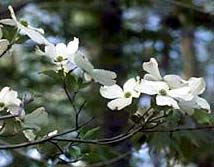|
|

La Primavera
(the spring)
Introduction
Kay Millikin first became involved with haiku as a student
at Millikin University in 2000. Very interested in the art
she continued to practice on her own while taking various
classes on the subject. Katie was very attracted to haiku
because of its ability to touch on life in a seemingly simple
way. Throughout her haiku Katie writes about topics that concern
the heart and human emotions.
Sweet innocence of childhood . . . a mud splattered dress,
her first recital, playing in a pile of leaves. Throughout
her haiku Kay Millikin reveals a barrage of emotions relating
to childhood using very vivid imagery. Most of her haiku contain
a prominent theme of innocence and playfulness. Her haiku
often cause the reader to associate with his/her own precious
childhood memories. Although she has not been writing haiku
for an extended period of time Katie has already displayed
a mastery of the art.
—Katherin Walsch, reader
Statement of poetics—Spring 2001
This is my second semester working with haiku,
and I hope it will not be my last. Over the past year I have
seen my haiku grow immensely with the help of my professor,
Dr. Brooks, and class readers. I look back now on my haiku
from last year, many of which I have revised and included
in this final set, and it astounds me how much more I’ve
learned about haiku with the addition of one intensive semester.
I am much more confident in my work now, and since I have
plenty of room to grow as a writer of haiku, I hope to continue
improving my work and to keep this beloved form of writing
with me at all times. To me, writing haiku is a practice of
celebrating life; capturing its joys, sorrows, and anticipations,
and sharing them with others through a written moment. How
then, could I take haiku out of my life without removing one
of my daily celebrations?
Earlier in the semester someone asked me what
my favorite class was this spring, and it took me a moment
to think of it, but eventually I answered that it was this
haiku class. Yet, I could not quite figure out why; we had
plenty of homework all the time, and after all it was just
a Global Studies course, but looking at it again I realized
this class did more than just educate me about a global tradition
of writing—it taught me about a global philosophy that
extends from a Japanese writer in the seventeenth century
to me, here, in a classroom at Millikin. We are all living,
and we all can choose to appreciate life, or ignore it. To
appreciate it is to appreciate haiku, and by writing haiku
we share our joys of living. It has been my approach in writing
haiku to share this gratitude and these special moments we
experience in daily living.
I have broken my haiku up into a cyclical flow
of seasons, starting and ending with spring. Spring is the
key season to me not only because it is the semester in which
most of these haiku were written, but also because it is the
season when I feel most inspired to write haiku, with the
joy of new life beginning everywhere. I do not believe every
haiku has to have a season word, or even has to be about nature,
but to me the seasons are excellent representations of emotions
and experiences.
I chose to entitle my work La
Primavera in Spanish because the Spanish language captures
the meaning of spring so beautifully; la primavera coming
from roots of both primera, first, and veras, truth or reality.
In no way am a Spanish linguist, merely a student with a minor
in the language, but the fact that this season word has these
two words built into it is no coincidence to me. Spring is
our time of first truth, or first reality in a discovery of
new birth all around us. My haiku this semester has come from
a first reality in discovering the importance of haiku in
my life, something I did not grasp until this semester.
My haiku season takes a cyclical pattern, from
spring to spring, showing the cyclical movement of life. Also,
as the spring is my most inspiring season I have many more
haiku for it than others. Following is my final collection
of the haiku I feel to be my best of this semester. Over the
years I know it will be revised, added to and deleted from,
but for now it is a collection I am happy to present.
—Kay Millikin
|
